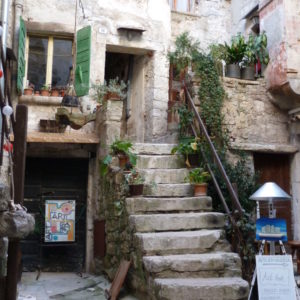Video courtesy of Visit Montenegro Tourism
Tiny Montenegro’s Mediterranean coastline sits at the feet of the Balkan Mountains. Its walled towns and mixture of Orthodox and Catholic churches and its cultural blend of Montenegrin, Serb, Bosniak, Albanian and Croatian have survived the vicissitudes of history and are breezing in to the future.
Formerly the smallest province of Yugoslavia, this gorgeous nation has a coastline of just 175 miles, but they are miles of pristine shores, washed by the warm, clear waters of the Adriatic Sea and sweeping from the Venetian port of Kotor to the border with mysterious Albania. Between the two are 117 beaches, some in sheltered inlets, bays and coves, others, like famous Sveti Stefan, reaching out to rocky outcrops. Luxuriant with shady groves of olives and Holm oak, criss-crossed with cooling rivers and dotted with glacial lakes, the mountains south-facing slopes are a fruit feast of fig and kiwi, orange and lemon orchards. The annual average of 240 sunny days is a bonus too for city botanical gardens and for the colourful flora of four National Parks.
The old town of Kotor is for many the most beautiful area of Montenegro and has been proclaimed a World Heritage Site by UNESCO. The town is situated at the southern end of the magnificent Boka Kotorska, a bay of Scandinavian proportions. The ancient fortress above the bay and the old town commands breath-taking views. Kotor town’s architecture is distinctly Venetian and has a labyrinth of winding, cobbled streets. There is a good selection of restaurants, bars and shops which contrast the ancient churches, museums and the medieval fortress.
Today, Perast is mostly an abandoned town, with barely 360 citizens, however during July and August various festivities like traditional Fasinada – a ritual procession of barges, which take stones to the Island of Gospa od Skrpjela, occur there. In August, Perast is host to a meeting of Klapa singers, a traditional form of singing practiced from Dalmatia to Montenegro.
Milocer, once, this was a famous summer residence of the Karadjordjevic Royal Family. The great number of rare plants, beautiful beaches and top-service hotels and villas at Milocer guarantees a wonderful holiday.
Montenegro has a Mediterranean climate, with hot dry summers and autumns and relatively cold winters with heavy snowfalls inland. The average summer coastal temperature is 27°C (81°F), and this is peak season (Jul-Aug).
Showing the single result
Need Assistance?
800-227-5317 | sales@pacific-destinations.com
Tell us where and when you want to go and we’ll give your request our immediate attention! No high pressure sales, just straight talk and sound advice!

